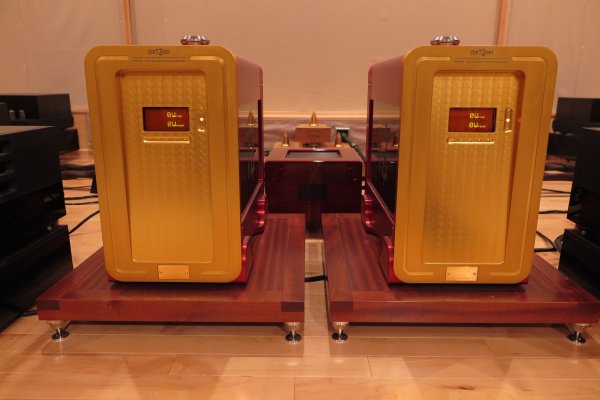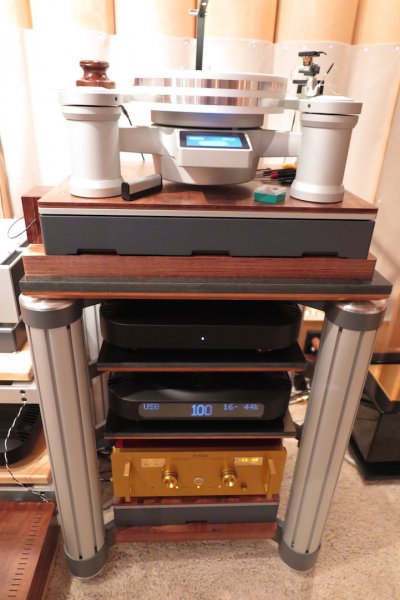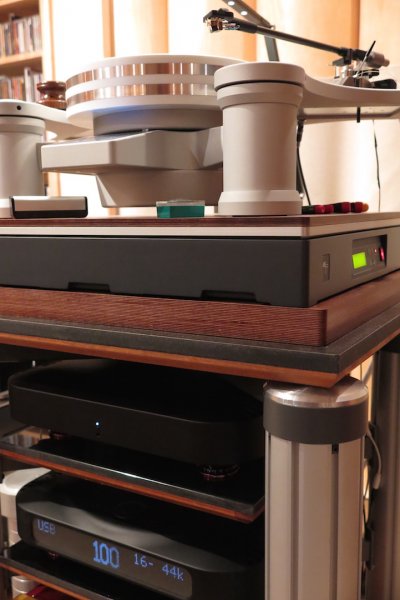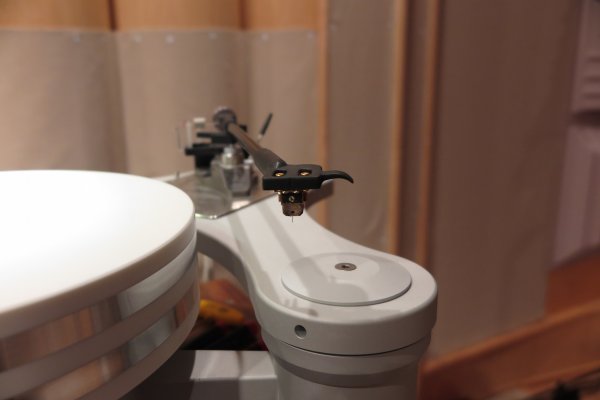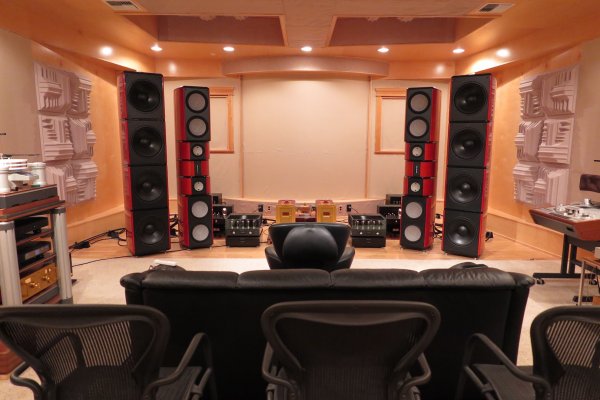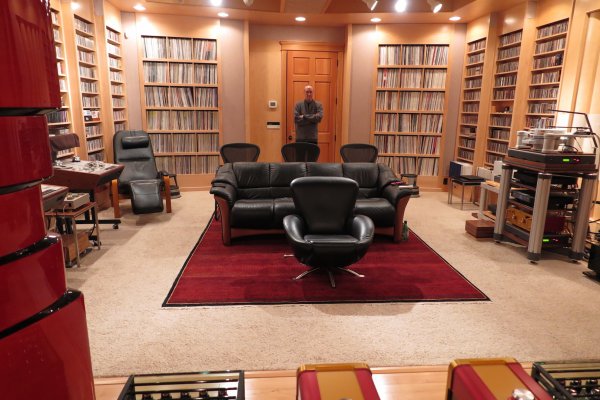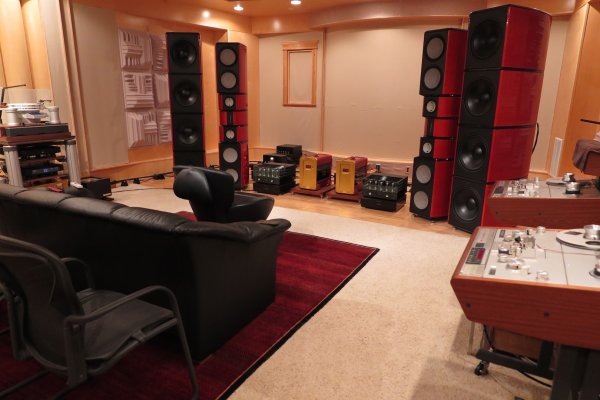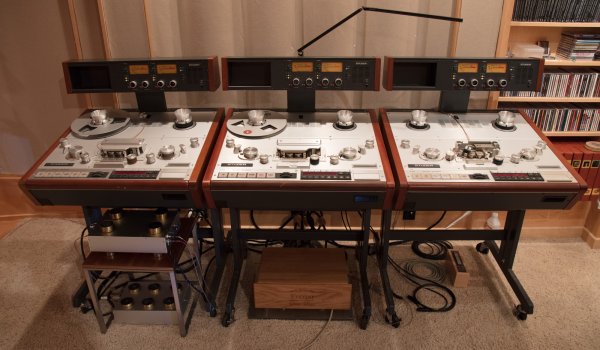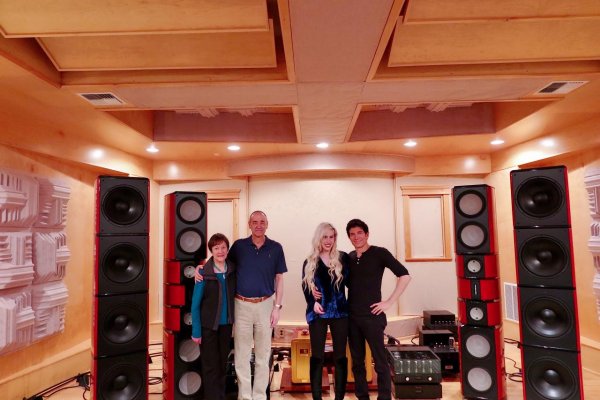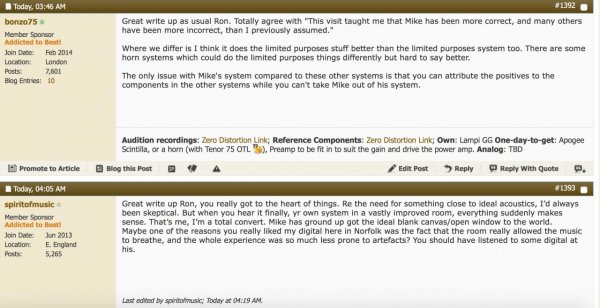AMPLIFIER COMPARISON
Fortuitously, when I visited, Mike had in his listening room not only the darTZeel 458s but also Lamm ML3s and Valve Amplification Company Statement 450s. Mike purchased the Lamms to enjoy a sonic presentation on vocals and simple instrumental music which is different from the sonic presentation of the darTZeels on those types of music. The VACs were in the house on loan from a friend. As I am trying to decide whether to attempt to use a high power SET amplifier on my 89dB sensitive Gryphon Audio Pendragon ribbon panels covering 200Hz and up or to stay loyal to high-power, Class AB, push-pull tube amplifiers which I have enjoyed for 18 years (VTL MB-750s) I was lucky to be able to compare all three amplifiers on different types of music.
The sound pressure level generated by 32 watts from the ML3s on the 97dB sensitive MM7s translates to an output requirement of about 200 watts on my 89dB sensitive speakers. (My room is shorter than Mike’s room, but my room has a taller ceiling so the cubic footage of both rooms is about the same.) One hundred and thirty watts is the approximate output of the 833 SET tube amplifiers I am considering for my system.
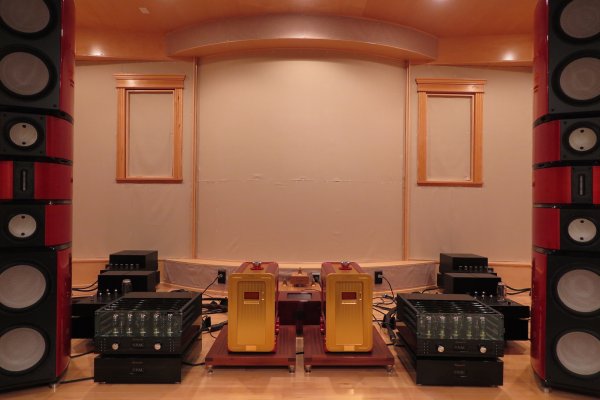
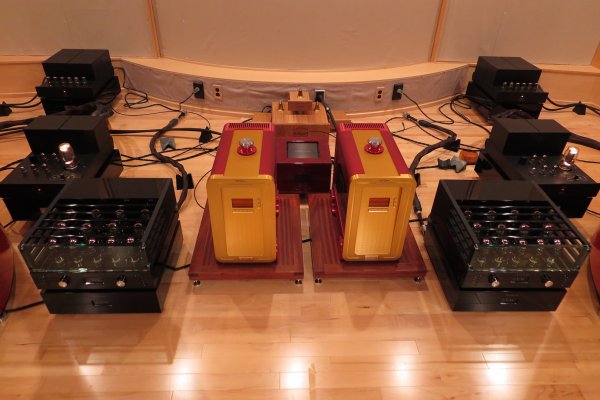 LAMM INDUSTRIES ML3
LAMM INDUSTRIES ML3
What can 32 SET watts accomplish on a 97dB sensitive loudspeaker system? That is the question Mike hoped to answer with his purchase of the Lamm ML3s.
I like very much Lamm electronics. I have enjoyed Lamm electronics in every single system in which I have heard them. Like many listeners I might find the Lamm electronics to be a touch “dark” sounding, but I find that sound to be more natural and more consonant with live music than the traditional Audio Research “illuminated” sound. (I have on excellent authority that this traditional ARC sound is not representative of the new generation of ARC Reference series amplifiers.)
While I will be using an Aesthetix Io phono stage in my system I have no doubt that the Lamm LP1 Signature phono preamplifier would be quieter than the Io. The Lamm would be my second choice. I chose the Io over the Lamm phono stage mainly because I want to generate all of the gain with tubes, rather than shift some of the pre-amplification responsibility to a step-up transformer. I think the Io will be a little bit bloomier and a little bit richer sounding than the Lamm. (But with the Io am I giving up something in transparency by pushing the signal through all of those tubes versus the less valve-complex Lamm? I would say “probably.” But I just love the Io!)
The ML3s were more natural and “liquid” and emotionally involving on vocals and simple acoustic instruments than were the VAC Statement 450s or the darTZeels. “Hallelujah” by Jeff Buckley on Grace sounded as good as I have ever heard it. “After the Goldrush" by Neil Young on After the Goldrush sounded very engaging.
But the performance envelope of the 32 watt ML3s was more limited than I was expecting. I thought most pop music and most jazz music would be within target range of the ML3s on the MM7s. But I was wrong.
On a song such as Neil Young’s “Old Man” the dynamic instrumental on the track became congested and a little mixed up on the Lamms compared to the VACs. With the VACs the various instruments could be heard more individually and clearly, as though they were physically separated on the stage, instead of all being played in the same space on the stage. Simple jazz music was rendered with greater believability and naturalness on the ML3s than on the VACs, but more complex jazz music revealed the headroom limitations of the Lamms. When the Lamms’ reach exceeded their grasp the sound hardened a little bit and I could hear the music become compressed, as though the ceiling was lowered toward the stage. The sound also became less resolving and less clear.
I think the ML3s are absolutely state-of-the-art amplifiers. I think they must be at least equal to the best 32 watts produced by any amplifier in the world today. Another brand’s 32 watts may be different, but I do not see how they could sound better. If Vladimir Lamm made a 150 watt version of the ML3s I would buy those amplifiers. Only by zeroing in on the one or two things the ML3 does not do perfectly when presented with a challenging combination of speaker sensitivity, dynamic requirement and room size could I find anything at all to critique.
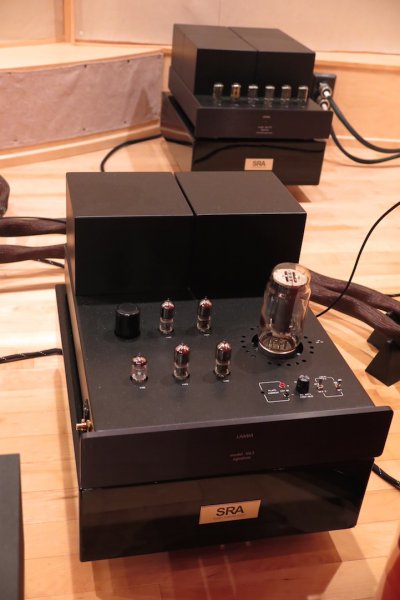 VALVE AMPLIFICATION COMPANY STATEMENT 450
VALVE AMPLIFICATION COMPANY STATEMENT 450
The VAC Statement 450s sounded more like what I am used to with the VTL MB-750s: very dynamic, powerful, transparent, high-power, Class AB, push-pull tube amplifiers that can meet every musical challenge without breaking a sweat. The compression effect I heard from the ML3s on Neil Young’s “Old Man” was completely absent when we played that track through the VACs.
Mike explained that compared to the transparency of the ML3s and the 458s he hears the 450s to have a sonic signature through which he must listen to the music. I interpret Mike’s comment to mean that the VACs are slightly less transparent than the other amplifiers -- like there is a pane of glass between the musicians and the listener, whereas no such pane of glass exists between the listener and the ML3s or between the listener and the 458s. Mike does not perceive this tube-related signature between himself and the performance with the ML3s or with the 458s.
I could not hear this sonic signature or this slight loss of transparency. But I have listened to high-power, push-pull, tube amps for 18 years. Maybe I just don’t notice, or maybe I simply am unable to detect, what might be a slight loss of transparency (compared to two of the very most transparent amplifiers in the entire world) because I am so accustomed to the sound of banks of output tubes in push-pull configuration?
Compared to the ML3s the 450s could handle every type of music thrown at them. There was no sense of any dynamic constraint or headroom limitation. On vocals with simple acoustic accompaniment I personally have not heard any amplifier which can beat the ML3s. But for lively jazz music and symphony orchestra music I preferred the VACs. On such music I believe that you gain more in power and dynamic capability with the VACs than you lose in transparency versus the Lamms.
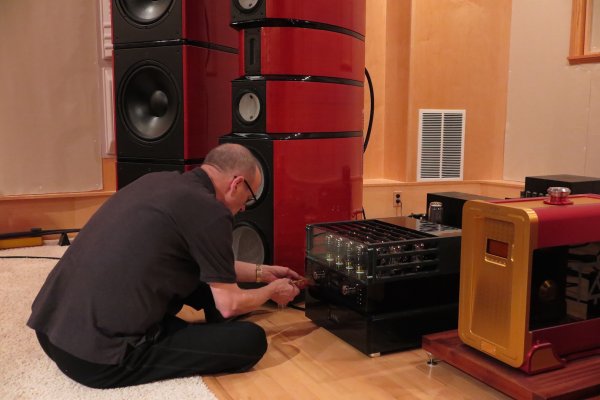 DARTZEEL NB-458
DARTZEEL NB-458
I am one of the first people to criticize anything I hear from solid-state amps which I do not like. I have spent my whole life not hearing a solid-state amp I could live with (the Vitus SM-011 being a possible exception, but my audition of it was too brief).
The darTZeel 458 does not exhibit any solid-state signature or solid-state “nasty” I could detect. It does not exhibit any coloration or “flavor” I could hear. I think I finally understand what “colorless” means with respect to amplifiers because I think I finally heard an amplifier example of “colorless.” The 458 does not sound solid-state; it does not sound like anything. The only artifact I could hear is that the 458 sounds a shade “dry” compared to the 450, and maybe two shades “dry” compared to the ML3.
This visit taught me that Mike has been more correct, and many others have been more incorrect, than I previously assumed. I believe that Mike Lavigne and Michael Fremer are accurate about their reports on, and impressions of, the 458s. (Mike Lavigne and Michael Fremer have reported substantially the same sonic characteristics of the 458s.) “The Great Gate at Kiev” from Pictures at an Exhibition (Reiner, CSO, RCA Living Stereo/Classic Records 4 disc 45rpm) is an incredibly dynamic piece which makes it easy to hear what Mike Lavigne has been writing about the 458 for years: seemingly unlimited dynamic range, unlimited dynamic capability and unlimited headroom; allows the most complex music to soar without hesitation or restraint; extremely transparent; highly resolving; and very detailed but not analytical, edgy or bright. Mike’s reported impressions sometimes have been met with skepticism or allegations of hyperbole. Now hearing the 458s myself I understand what Mike has been writing about them, and I agree with him.
Only in direct comparison to the darTZeel 458s could I discern that the VAC 450s are not quite as ultimately dynamic or as microscope resolving as the 458s. Only in direct comparison could I hear a very slight smoothing of detail compared to the VACs. The VACs do not exhibit quite the seemingly unlimited dynamic power and speed of the 458s.
I was very surprised that the darTZeels do not add to the sound, or exhibit, any edginess or brightness or over-etched artifact like every other solid-state amplifier I have heard. But they do not smooth out anything, either. The 458 is a very impressive actualization of the apocryphal “straight wire with gain.”
With the 458s on “The Great Gate at Kiev” cymbals crashed with almost the speed and detail and decaying shimmer of the real instrument. Drums pounded with almost the physical energy and sonic breadth of the actual instrument.
I have enjoyed six symphony orchestra concerts at Walt Disney Concert Hall in Los Angeles, California, over the last few months, including “Pictures at an Exhibition.” The 458s allowed Mike’s system to achieve the highest level of realism -- the greatest suspension of disbelief -- I have ever experienced in my entire life on complex classical music. This system exhibited the sound closest to the dynamics and the power and the immediate, unrestrained “rise time” and “jump factor” of live musicians playing real instruments that I have ever heard!
